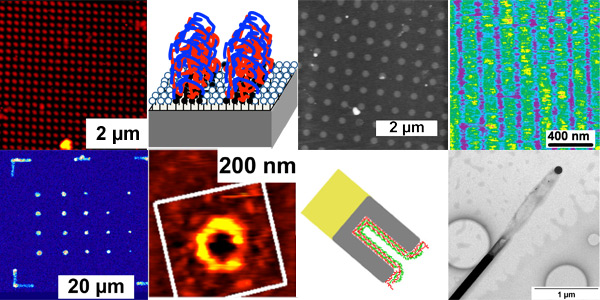Templated assembly

Context : Polymer chains and other macromolecules have to be assembled at precise positions to fabricate functional nanosystems. This can be done by providing assembling instructions to the macromolecules. One can either store the instructions in the structure of the macromolecules - this is supramolecular assembly -, or write the instructions in the surroundings of the macromolecules - this is templated assembly. These instructions are then read during assembly, leading to the fabrication of nanostructures.
Our contribution :
We have developed methods to write tiny assembling instructions in "templates" that are usually fabricated by some sort of nanolithography, down to ~30 nanometer. Different processes are then used to read the instructions, playing with interaction forces between the template and the macromolecules.
Apart from the very fabrication of the nanostructures, we are also scientifically interested by the perturbations of the macromolecules when they assemble in such tiny structures, which are often smaller than a characteristic length of the macromolecules.
Currently, we are focusing on templates for biological interactions, and on the fabrication of templated nanostructures for drug delivery and enzymatic activity.
Collaborations : Wilhelm Huck (U. Cambridge, now U. Nijmegen), Marie-Christine Durrieu (U. Bordeaux), Christian Bonhomme (U. Paris 6), and Bernard Nysten, Sophie Demoustier, and Karine Glinel of UCLouvain.
